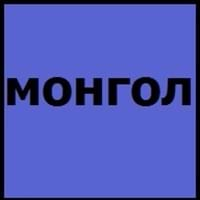Mongolian vs Cebuano
Countries
China, Mongolia
Philippines
National Language
China, Mongolia
Philippines
Second Language
Not spoken in any of the countries
Philippines
Speaking Continents
Asia
Asia
Minority Language
Not spoken in any of the countries
Not spoken in any of the countries
Regulated By
Council for Language and Literature Work, State Language Council (Mongolia)
Visayan Academy of Arts and Letters
Interesting Facts
- Mongolian was first written using Phagspa script in late 13th century.
- There is no connection between Mongolian, Japanese and Korean, but still in terms of grammar and sentence structure they are very similar.
- About one-fifth of the population of the philippines speak cebuano and are second largest ethnolinguistic group in the country.
- Cebuano contains many words of Spanish origin.
Similar To
Turkish Language
Hiligaynon Language
Derived From
Not Available
Island of Cebu
Alphabets in
Mongolian-Alphabets.jpg#200
Cebuano-Alphabets.jpg#200
Scripts
Mongolian alphabets: Traditional Mongolian script
Latin
Writing Direction
Not Available
Not Available
Hello
Сайн уу (Sain uu)
Hoy
Thank You
та бүхэнд баярлалаа (ta bükhend bayarlalaa)
Salamat
How Are You?
Юу байна? (Yuu baina?)
Kumusta man ka?
Good Night
Сайн шөнийн (Sain shöniin)
Maayong Gabii
Good Evening
Сайн үдэш (Sain üdesh)
Maayong Gabii
Good Afternoon
Сайн Үдээс хойш (Sain Üdees khoish)
Maayong Hapon
Good Morning
Өглөөний мэнд (Öglöönii mend)
Maayong Buntag
Please
Хэрэв (Kherev)
Palihug
Sorry
Уучлаарай (Uuchlaarai)
Ikasubo ko
Bye
Баяртай (Bayartai)
Babay
I Love You
Би чамд хайртай (Bi chamd khairtai)
Gihigugma ko ikaw
Excuse Me
Өршөөгөөрэй (Örshöögöörei)
Ekskyus mi
Dialect 1
Khalkha Mongolian
Boholano
Where They Speak
Mongolia
Bohol
Dialect 2
Ordos Mongolian
Southern Kana
Where They Speak
Mongolia
southern Leyte
How Many People Speak
Not Available
Dialect 3
Khorchin Mongolian
North Kana
Where They Speak
Mongolia
northern part of Leyte
How Many People Speak?
Not Available
Speaking Population
Not Available
Second Language Speakers
Not Available
Native Name
монгол (mongol) монгол хэл (mongol hêl)
Visayan
Alternative Names
Not Available
Binisaya, Bisayan, Sebuano, Sugbuanon, Sugbuhanon, Visayan
French Name
mongol
cebuano
German Name
Mongolisch
Cebuano
Pronunciation
/mɔŋɢɔ̆ɮ xiɮ/
Not Available
Ethnicity
Not Available
Cebuano people
Origin
1224-1225
16th century
Language Family
Mongolic family
Austronesian Family
Subgroup
Mongolian
Not Available
Branch
Not Available
Not Available
Early Forms
Middle Mongolian, Classical Mongolian, Mongolian
No early forms
Standard Forms
Khalkha, Southern Mongolian
Standard Cebuano
Language Position
Not Available
Signed Forms
Mongolian Sign Language
Not Available
Scope
Macrolanguage
Individual
ISO 639 1
mn
No data Available
ISO 639 6
Not Available
Not Available
Glottocode
mong1331
cebu1242
Linguasphere
part of 44-BAA-b
No data Available
Language Type
Living
Living
Language Linguistic Typology
Subject-Object-Verb
Verb-Subject-Object
Language Morphological Typology
Not Available
Not Available
Mongolian and Cebuano Language History
Comparison of Mongolian vs Cebuano language history gives us differences between origin of Mongolian and Cebuano language. History of Mongolian language states that this language originated in 1224-1225 whereas history of Cebuano language states that this language originated in 16th century. Family of the language also forms a part of history of that language. More on language families of these languages can be found out on Mongolian and Cebuano Language History.
Mongolian and Cebuano Greetings
People around the world use different languages to interact with each other. Even if we cannot communicate fluently in any language, it will always be beneficial to know about some of the common greetings or phrases from that language. This is where Mongolian and Cebuano greetings helps you to understand basic phrases in Mongolian and Cebuano language. Mongolian word for "Hello" is Сайн уу (Sain uu) or Cebuano word for "Thank You" is Salamat. Find more of such common Mongolian Greetings and Cebuano Greetings. These greetings will help you to be more confident when conversing with natives that speak these languages.
Mongolian vs Cebuano Difficulty
The Mongolian vs Cebuano difficulty level basically depends on the number of Mongolian Alphabets and Cebuano Alphabets. Also the number of vowels and consonants in the language plays an important role in deciding the difficulty level of that language. The important points to be considered when we compare Mongolian and Cebuano are the origin, speaking countries, language family, different greetings, speaking population of these languages. Want to know in Mongolian and Cebuano, which language is harder to learn? Time required to learn Mongolian is 44 weeks while to learn Cebuano time required is 3 weeks.





